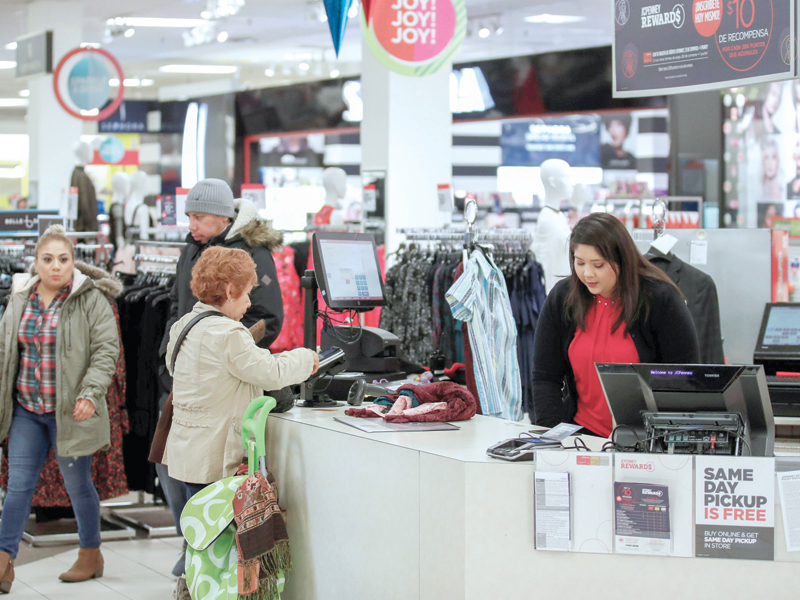

WASHINGTON: US consumer spending rose marginally for a second straight month in February as households boosted savings, the latest indication that the economy lost momentum in the first quarter.
But the economy’s fundamentals remain strong, with other data on Thursday showing the number of Americans filing for unemployment benefits dropping to more than a 45-year low last week. A tightening labour market is expected to start driving up wages by the second half of this year.
Consumer spending has been tepid this year despite strong consumer confidence, which has been bolstered by income tax cuts. Some economists said the tax cuts, which came into effect in January, only reflected on most workers’ paychecks in late February. They also believed that delays in processing tax refunds had contributed to holding back spending.
“The outlook for spending on discretionary categories is obviously more uncertain, though there are some plausible reasons to expect better consumption outcomes ahead,” said Michael Feroli, an economist at JPMorgan in New York.
“Relative to years past, tax refunds were paid out slower at the start of this year.”
The Commerce Department said consumer spending, which accounts for more than two-thirds of US economic activity, increased 0.2 per cent last month after a similar gain in January. It was supported by a rebound in spending on long-lasting goods, such as motor vehicles, as was a rise in financial services and insurance expenditures.
The increase in consumer spending in February was in line with economists’ expectations.
There was also a moderation in monthly inflation readings after prices pushed higher in January. The personal consumption expenditures (PCE) price index excluding the volatile food and energy components rose 0.2 per cent last month after advancing 0.3 per cent in January.
That lifted the year-on-year increase in the so-called core PCE price index to 1.6 per cent, the biggest gain since February 2017, from 1.5 per cent in January. The core PCE index is the Federal Reserve’s preferred inflation measure. It has been below the US central bank’s 2 per cent target since mid-2012.
Economists believe the annual core PCE price index could accelerate to 1.9 per cent in March as last year’s weak readings drop out of the calculation. The Fed raised interest rates last week and forecast at least two more rate hikes this year. “Policymakers can be confident about the inflation outlook and will likely keep with the plan to raise rates a couple more times this year,” said Chris Rupkey, chief economist at MUFG in New York. “Inflation is not heating up, but pressures are building.
The dollar was little changed against a basket of currencies while stocks on Wall Street were trading higher. Prices of US government bonds rose.
The steady rise in inflation last month also helped curb consumer spending. When adjusted for inflation, consumer spending was unchanged in February after falling 0.2 per cent in the prior month. That suggests a sharp slowdown in consumer spending in the first quarter after it surged at an eye-popping 4.0 per cent annualised rate in the fourth quarter. The tepid consumer spending added to data on trade, housing and business spending on equipment that have left economists anticipating moderate economic growth in the first quarter. — Reuters
Oman Observer is now on the WhatsApp channel. Click here



